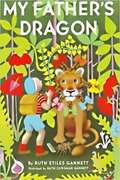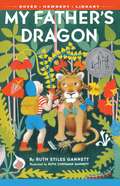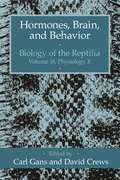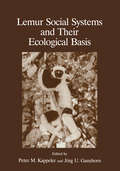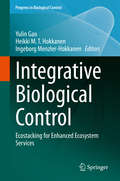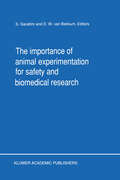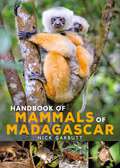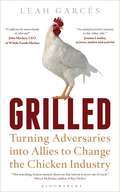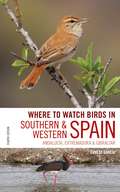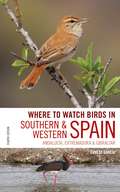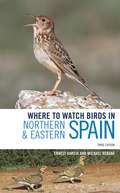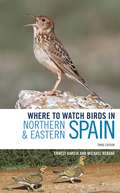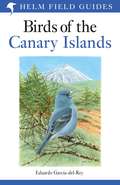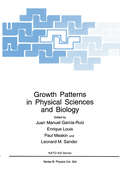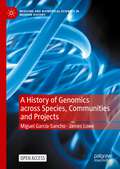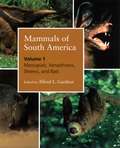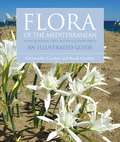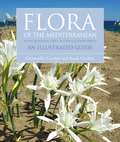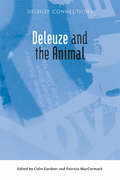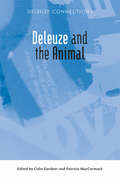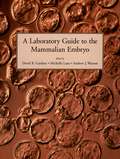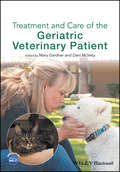- Table View
- List View
My Father's Dragon
by Ruth Stiles GannettWhen Elmer Elevator hears about the plight of an overworked and underappreciated baby flying dragon, he stows away on a ship and travels to Wild Island to rescue the dragon.<P><P> A Newbery Honor book
My Father's Dragon
by Ruth Stiles Gannett Ruth Chrisman GannettWhen Elmer Elevator tells a stray cat about his dream of being able to fly, he learns of a captive dragon on Wild Island. The dragon has been forced by the jungle residents to serve as their shuttle across a wide river — and anyone who rescues the dragon from its cruel captors might be entitled to a free ride.Elmer needs no further encouragement to stow away aboard a ship to the island, where he matches wits with hungry tigers, an irate gorilla, cranky crocodiles, and other moody creatures. A charmingly illustrated Newbery Honor Book, this comic adventure story has delighted generations of children.
Hormones, Brain, and Behavior (Biology of the Reptilia Series #18)
by Carl Gans David CrewsThis is the first volume to integrate information on ways in which the nervous and endocrine systems interact to mediate crucial aspects of reptile behavior. Although the authors pay particular attention to reproductive behavior, from initial recognition and evaluation of potential partners to decisions about reproduction, they also deal with other survival behaviors.
Lemur Social Systems and Their Ecological Basis
by J. Ganzhorn P. M. KappelerThe past decade has seen a steady increase in studies oflemur behavior and ecology. As a result, there is much novel information on newly studied populations, and even newly discovered species, that has not yet been published or summarized. In fact, lemurs have not been the focus of an international symposium since the Prosimian Biology Conference in London in 1972. Moreover, research on lemurs has reached a new quality by addressing general issues in behavioral ecology and evolutionary biology. Although lemurs provide important comparative information on these topics, this aspect of research on lemurs has not been reviewed and compared with similar studies in other primate radiations. Thus, as did many in the field, we felt that the time was ripe to review and synthesize our knowledge of lemur behavioral ecology. Following an initiative by Gerry Doyle, we organized a symposium at the XIVth Congress of the International Primatological Society in Strasbourg, France, where 15 contributions summarized much new information on lemur social systems and their ecological basis. This volume provides a collection of the papers presented at the Strasbourg symposium (plus two reports from recently completed field projects). Each chapter was peer-reviewed, typically by one "lemurologist" and one other biologist. The first three chapters present novel information from the first long-term field studies of three enigmatic species. Sterling describes the social organization of Daubentonia madagascariensis, showing that aye-aye ranging patterns deviate from those of all other nocturnal primates.
Integrative Biological Control: Ecostacking for Enhanced Ecosystem Services (Progress in Biological Control #20)
by Yulin Gao Heikki M. T. Hokkanen Ingeborg Menzler-HokkanenThis book is the first to integrate biological control into a conceptual framework – ecostacking - uniting all aspects of biological control and ecosystem services. In 2018 the "First International Congress of Biological Control" was organised and held in Beijing, China. The chapters highlight some of the achievements presented at the congress, worldwide. Of particular significance are the numerous contributions by Chinese researchers illustrating the remarkable progress made on developing and adopting multiple biological control strategies over vast agricultural areas, largely replacing chemical pesticides for sustainable agricultural and horticultural production. In many parts of the world including Europe, fragmented research based on short-term funding has been unable to answer to the needs to develop sustainable long-term solutions to crop protection, while colleagues in China have been successful in implementing programs that exemplify the power of the ecostacking approach. Key contributions by European and US specialists combined with the expertise and experiences by the Chinese contributors comprise the building blocks for the integration of biological control approaches into the overall frame of ecostacking. This book will lead the way to a broader, integrated adoption of biological control techniques in sustainable pest, disease and weed management supporting also the functioning of other key ecosystem services.Chapter 2 of this book isavailable openaccess under a CC BY 4.0 license at link.springer.com
The Importance of Animal Experimentation for Safety and Biomedical Research
by S. Garattini D. W. Van BekkumScientists are coming under increasing pressure from activist groups to stop animal experimentation, branded as cruel and unnecessary for improving human health. This attitude, however, stems from an unrealistic evaluation of the situation and distorted information about present scientific knowledge. There is no question that most medical progress - perhaps all, in fac- has been attained through knowledge derived initially from experiments in various animal species. There is practically no way of replacing animals in these investigations and so-called 'alternative methods' are in reality merely complementary. Tissue cultures, cell, microorganisms, enzymes, membranes, mathematical models - all are useful for preliminary screening tests and for testing hypotheses, but the complexity of a living organism is such that in vivo studies are essential before any test can responsibly be made in man. This book presents the proceedings of an international symposium organized in Strasbourg (October 24-25, 1988), with the aim of assessing present-day requirements as regards animal experimentation in research related to major medical and toxicological problems still awaiting solutions.
Handbook of Mammals of Madagascar
by Nick GarbuttMadagascar is home to one of the most remarkable assemblages of mammals on earth. Millions of years of isolation has resulted in the evolution of a suite of species that are exceptional for two major reasons. Firstly, every native non-volant species (approximately 210 species) is endemic. No other island or place on earth boasts such a combination of species richness and endemism. And secondly, these mammals have evolved an extraordinary diversity of body forms and lifestyles often displaying significant convergence with forms elsewhere but also at times evolving utterly unique features.Handbook of the Mammals of Madagascar describes all 217 native species, including bats, tenres, mice and lemurs, and a small number of introduced, non-native species. Species accounts are subdivided into sections covering description and identification, habitat and distribution (including distribution maps), behaviour and where to see. Over the past 15 years, major advances in research have been made into the island's mammal fauna and species accounts include all the latest information. Supporting chapters cover the island's regions and habitats, threats to mammals, conservation and important mammal watching sites. There is also a section covering the bizarre extinct mammal fauna.Throughout, the book is illustrated with exceptional, high-quality photography, often featuring species rarely photographed previously.
Handbook of Mammals of Madagascar
by Nick GarbuttMadagascar is home to one of the most remarkable assemblages of mammals on earth. Millions of years of isolation has resulted in the evolution of a suite of species that are exceptional for two major reasons. Firstly, every native non-volant species (approximately 210 species) is endemic. No other island or place on earth boasts such a combination of species richness and endemism. And secondly, these mammals have evolved an extraordinary diversity of body forms and lifestyles often displaying significant convergence with forms elsewhere but also at times evolving utterly unique features.Handbook of the Mammals of Madagascar describes all 217 native species, including bats, tenres, mice and lemurs, and a small number of introduced, non-native species. Species accounts are subdivided into sections covering description and identification, habitat and distribution (including distribution maps), behaviour and where to see. Over the past 15 years, major advances in research have been made into the island's mammal fauna and species accounts include all the latest information. Supporting chapters cover the island's regions and habitats, threats to mammals, conservation and important mammal watching sites. There is also a section covering the bizarre extinct mammal fauna.Throughout, the book is illustrated with exceptional, high-quality photography, often featuring species rarely photographed previously.
Grilled: Turning Adversaries into Allies to Change the Chicken Industry
by Leah Garcés'An animal activist's journey to the "other side"' Joanna LumleyThis is the story of what happens when we cross enemy lines to look for solutions.Leah Garcés has dedicated her career to fighting for the rights of the animals that end up on our plates. As President of the non-profit group Mercy for Animals and former US Executive Director of Compassion in World Farming, she has led the fight against the sprawling chicken industry that raises billions of birds in cruel conditions – all to satisfy our appetite for meat.Grilled is Leah's story of working alongside the food and farming industry for animal welfare and ethical food. Instead of fighting and protesting and shaming – approaches that simply haven't worked previously – Garcés has instead tried to find common ground with producers. She has worked alongside owners of the megafarms, befriending them, having frank conversations with them, and ultimately encouraging change through dialogue and discussion. Leah is helping to directly improve the lives of millions of farm animals, and pushing alternatives such as plant-based substitutes and lab-grown meats to the top of the agenda, with some of the mega-farm conglomerates joining forces with her to explore these avenues.When she started her journey, Leah Garcés did not have much empathy to spare for the contract chicken farmer –until she actually met one and tried to understand the difficulties they faced. This is the story of giving in to discomfort for the sake of progress. It's a story of the power of human connection, and what happens when we practice empathy toward our enemies.
Where to Watch Birds in Southern and Western Spain: Andalucia, Extremadura and Gibraltar (Where to Watch Birds)
by Ernest Garcia Andrew PatersonSouthern Iberia is in the top rank of European birding hotspots, and the fourth edition of this popular book, first published in 1994, continues to ensure that visitors can make the most of the region's many attractions. The information on all sites has been brought right up-to-date, with revised maps and full updated site access details and species lists. Popular localities such as Doñana, Monfragüe and the Strait of Gibraltar get prominent treatment, but the reader is encouraged to wander further afield to visit other, less well-known but equally rewarding sites, including a number of additional localities that are new to this edition.This new edition is indispensable for all birders visiting this remarkable corner of Spain.
Where to Watch Birds in Southern and Western Spain: Andalucia, Extremadura and Gibraltar (Where to Watch Birds)
by Ernest Garcia Andrew PatersonSouthern Iberia is in the top rank of European birding hotspots, and the fourth edition of this popular book, first published in 1994, continues to ensure that visitors can make the most of the region's many attractions. The information on all sites has been brought right up-to-date, with revised maps and full updated site access details and species lists. Popular localities such as Doñana, Monfragüe and the Strait of Gibraltar get prominent treatment, but the reader is encouraged to wander further afield to visit other, less well-known but equally rewarding sites, including a number of additional localities that are new to this edition.This new edition is indispensable for all birders visiting this remarkable corner of Spain.
Where to Watch Birds in Northern and Eastern Spain
by Ernest Garcia Michael RebaneThe definitive guide to finding birds in Northern and Eastern Spain.This region embraces an impressive range of habitats from the Pyrenees to the sun-drenched Catalan coast. As a consequence the area is rich in birdlife and full of potential for visiting birders. Almost 200 sites are described in this fully updated third edition, with full coverage of terms of habitat, access and the species to be seen. The accounts are illustrated by detailed maps and beautiful line drawings of selected species.Where to Watch Birds in Northern and Eastern Spain includes comprehensive coverage of all thirteen autonomous regions, a descriptive list of all the resident, visiting and rare birds to be found, as well as advice on watching seabirds from key sites like Estaca de Bares. This edition provides better coverage than ever to one of the most popular birding destinations in Europe.
Where to Watch Birds in Northern and Eastern Spain (Where To Watch Birds Ser.)
by Ernest Garcia Michael RebaneThe definitive guide to finding birds in Northern and Eastern Spain.This region embraces an impressive range of habitats from the Pyrenees to the sun-drenched Catalan coast. As a consequence the area is rich in birdlife and full of potential for visiting birders. Almost 200 sites are described in this fully updated third edition, with full coverage of terms of habitat, access and the species to be seen. The accounts are illustrated by detailed maps and beautiful line drawings of selected species.Where to Watch Birds in Northern and Eastern Spain includes comprehensive coverage of all thirteen autonomous regions, a descriptive list of all the resident, visiting and rare birds to be found, as well as advice on watching seabirds from key sites like Estaca de Bares. This edition provides better coverage than ever to one of the most popular birding destinations in Europe.
Birds of the Canary Islands: Azores, Madeira, Canary Islands, Cape Verde (Helm Field Guides)
by Mr Eduardo Garcia-del-ReyAn essential guide to birds of the Canary Islands, an area with an impressive range of speciesThis comprehensive guide covers all bird species found in the Canary Islands, a group of beautiful islands that are home to endemics such as the Blue Chaffinch, and are one of the best places in the world to see a number of rare species.The book covers every species recorded in the Canary Islands, including vagrants. Included are 73 colour plates illustrating more than 300 species, with text on facing pages for quick and easy reference. The concise text covers status, distribution, habitat, identification, voice and taxonomy.Also incorporated is an introduction with information on the geography and climate of the Canary Islands, plus habitats, birding sites and conservation.
Growth Patterns in Physical Sciences and Biology (Nato Science Series B: #304)
by Juan Manuel Garcia-Ruiz Enrique Louis P. Meakin Leonard M. SanderDuring the past decade interest in the formation of complex disorderly patterns far from equilibrium has grown rapidly. This interest has been stim ulated by the development of new approaches (based primarily on fractal geometry) to the quantitative description of complex structures, increased understanding of non-linear phenomena and the introduction of a variety of models (such as the diffusion-limited aggregation model) that provide paradigms for non-equilibrium growth phenomena. Advances in computer technology have played a crucial role in both the experimental and theoret ical aspects of this enterprise. Substantial progress has been made towards the development of comprehensive understanding of non-equilibrium growth phenomena but most of our current understanding is based on simple com puter models. Pattern formation processes are important in almost all areas of science and technology, and, clearly, pattern growth pervades biology. Very often remarkably similar patterns are found in quite diverse systems. In some case (dielectric breakdown, electrodeposition, fluid-fluid displacement in porous media, dissolution patterns and random dendritic growth for example) the underlying causes of this similarity is quite well understood. In other cases (vascular trees, nerve cells and river networks for example) we do not yet know if a fundamental relationship exists between the mechanisms leading the formation of these structures.
A History of Genomics across Species, Communities and Projects (Medicine and Biomedical Sciences in Modern History)
by Miguel García-Sancho James LoweThis open access book offers a comprehensive overview of the history of genomics across three different species and four decades, from the 1980s to the recent past. It takes an inclusive approach in order to capture not only the international initiatives to map and sequence the genomes of various organisms, but also the work of smaller-scale institutions engaged in the mapping and sequencing of yeast, human and pig DNA. In doing so, the authors expand the historiographical lens of genomics from a focus on large-scale projects to other forms of organisation. They show how practices such as genome mapping, sequence assembly and annotation are as essential as DNA sequencing in the history of genomics, and argue that existing depictions of genomics are too closely associated with the Human Genome Project. Exploring the use of genomic tools by biochemists, cell biologists, and medical and agriculturally-oriented geneticists, this book portrays the history of genomics as inseparably entangled with the day-to-day practices and objectives of these communities. The authors also uncover often forgotten actors such as the European Commission, a crucial funder and forger of collaborative networks undertaking genomic projects. In examining historical trajectories across species, communities and projects, the book provides new insights on genomics, its dramatic expansion during the late twentieth-century and its developments in the twenty-first century. Offering the first extensive critical examination of the nature and historicity of reference genomes, this book demonstrates how their affordances and limitations are shaped by the involvement or absence of particular communities in their production.
The Dynamics of Thought (Synthese Library #300)
by Peter GardenforsThis book is a selection from the articles that I have written over a period of more than twenty years. Since the focus of my research interests has shifted several times during this period, it would be difficult to identify a common theme for all the papers in the volume. Following the Swedish tradition, I therefore present this as a smörgåsbord of philosophical and cognitive issues that I have worked on. To create some order, I have organized the sixteen papers into five general sections: (1) Decision theory; (2) belief revision and nonmonotonic logic; (3) induction; (4) semantics and pragmatics; and (5) cognition and evolution. Having said this, I still think that there is a common theme to my work over the years: The dynamics of thought. My academic interests have all the time dealt with aspects of how different kinds of knowledge should be represented, and, in particular, how changes in knowledge will affect thinking. Hence the title of the book.
Mammals of South America, Volume 1: Marsupials, Xenarthrans, Shrews, and Bats
by Alfred GardnerThe vast terrain between Panama and Tierra del Fuego contains some of the world’s richest mammalian fauna, but until now it has lacked a comprehensive systematic reference to the identification, distribution, and taxonomy of its mammals. The first such book of its kind and the inaugural volume in a three-part series, Mammals of South America both summarizes existing information and encourages further research of the mammals indigenous to the region. Containing identification keys and brief descriptions of each order, family, and genus, the first volume of Mammals of South America covers marsupials, shrews, armadillos, sloths, anteaters, and bats. Species accounts include taxonomic descriptions, synonymies, keys to identification, distributions with maps and a gazetteer of marginal localities, lists of recognized subspecies, brief summaries of natural history information, and discussions of issues related to taxonomic interpretations.Highly anticipated and much needed, this book will be a landmark contribution to mammalogy, zoology, tropical biology, and conservation biology.
Mammals of South America, Volume 1: Marsupials, Xenarthrans, Shrews, and Bats
by Alfred L. GardnerThe vast terrain between Panama and Tierra del Fuego contains some of the world’s richest mammalian fauna, but until now it has lacked a comprehensive systematic reference to the identification, distribution, and taxonomy of its mammals. The first such book of its kind and the inaugural volume in a three-part series, Mammals of South America both summarizes existing information and encourages further research of the mammals indigenous to the region. Containing identification keys and brief descriptions of each order, family, and genus, the first volume of Mammals of South America covers marsupials, shrews, armadillos, sloths, anteaters, and bats. Species accounts include taxonomic descriptions, synonymies, keys to identification, distributions with maps and a gazetteer of marginal localities, lists of recognized subspecies, brief summaries of natural history information, and discussions of issues related to taxonomic interpretations.Highly anticipated and much needed, this book will be a landmark contribution to mammalogy, zoology, tropical biology, and conservation biology.
Flora of the Mediterranean: An Illustrated Guide
by Christopher Gardner Basak GardnerThe Mediterranean – a land of blues skies, warm sunshine, rugged mountains and azure seas. Yet this familiar image conceals another Mediterranean – a secret landscape populated by a dazzling variety of wild flowers and plants, from spectacular orchids and ancient olive trees to delicate snowdrops and hardy cacti. Following on from their widely acclaimed Flora of the Silk Road, Chris and Basak Gardner present a stunning selection of 600 of the finest wild flowers that grow in the Mediterranean regions of the world. Travelling across five continents – Europe, North America, Africa, South America and Australia – the authors reveal the rich botanical profusion that makes up the flora of the Mediterranean regions of the world. For each region, a succession of the most outstanding flowers is featured, from the spectacular and exotic to the beautiful yet familiar, with each plant presented in its natural habitat. Beginning with the countries of the Mediterranean Basin, the reader is taken along the rugged Atlas Mountains, through Andalucía and Italy, to arrive at the amazing botanical richness of Greece, southern Anatolia and Jordan. In California and Chile the journey is through flowering deserts, snow-capped peaks and towering forests of redwood and monkey puzzle trees, beside a coast lapped by the Pacific Ocean. The ancient landscapes of Southern Australia provide a truly remarkable assemblage of astonishing flora, whilst the Western Cape of South Africa is home to an unimaginable diversity of flora. The accompanying text provides descriptions of the species, plant families and their distribution, as well as offering guidance to those wishing to photograph plants in the wild. With 600 stunning colour photographs, and presenting a breadth of flora never before brought together in a single volume, the authors offer a unique window on the floral wonders of the Mediterranean world.
Flora of the Mediterranean: An Illustrated Guide
by Christopher Gardner Basak GardnerThe Mediterranean – a land of blues skies, warm sunshine, rugged mountains and azure seas. Yet this familiar image conceals another Mediterranean – a secret landscape populated by a dazzling variety of wild flowers and plants, from spectacular orchids and ancient olive trees to delicate snowdrops and hardy cacti. Following on from their widely acclaimed Flora of the Silk Road, Chris and Basak Gardner present a stunning selection of 600 of the finest wild flowers that grow in the Mediterranean regions of the world. Travelling across five continents – Europe, North America, Africa, South America and Australia – the authors reveal the rich botanical profusion that makes up the flora of the Mediterranean regions of the world. For each region, a succession of the most outstanding flowers is featured, from the spectacular and exotic to the beautiful yet familiar, with each plant presented in its natural habitat. Beginning with the countries of the Mediterranean Basin, the reader is taken along the rugged Atlas Mountains, through Andalucía and Italy, to arrive at the amazing botanical richness of Greece, southern Anatolia and Jordan. In California and Chile the journey is through flowering deserts, snow-capped peaks and towering forests of redwood and monkey puzzle trees, beside a coast lapped by the Pacific Ocean. The ancient landscapes of Southern Australia provide a truly remarkable assemblage of astonishing flora, whilst the Western Cape of South Africa is home to an unimaginable diversity of flora. The accompanying text provides descriptions of the species, plant families and their distribution, as well as offering guidance to those wishing to photograph plants in the wild. With 600 stunning colour photographs, and presenting a breadth of flora never before brought together in a single volume, the authors offer a unique window on the floral wonders of the Mediterranean world.
Deleuze and the Animal (Deleuze Connections)
by Colin Gardner Patricia MacCormackBecoming-animal is a key concept for Deleuze and Guattari; the ambiguous idea of the animal as human and nonhuman life infiltrates all of Deleuze’s work. These 16 essays apply Deleuze’s work to analysing television, film, music, art, drunkenness, mourning, virtual technology, protest, activism, animal rights and abolition. Each chapter questions the premise of the animal and critiques the centrality of the human. This collection creates new questions about what the age of the Anthropocene means by ‘animal’ and analyses and explores examples of the unclear boundaries between human and animal.
Deleuze and the Animal (Deleuze Connections)
by Colin Gardner Patricia MacCormackBecoming-animal is a key concept for Deleuze and Guattari; the ambiguous idea of the animal as human and nonhuman life infiltrates all of Deleuze’s work. These 16 essays apply Deleuze’s work to analysing television, film, music, art, drunkenness, mourning, virtual technology, protest, activism, animal rights and abolition. Each chapter questions the premise of the animal and critiques the centrality of the human. This collection creates new questions about what the age of the Anthropocene means by ‘animal’ and analyses and explores examples of the unclear boundaries between human and animal.
A Laboratory Guide to the Mammalian Embryo
by David K. Gardner Michelle Lane Andrew J. WatsonThis book pulls together the full range of cell culture, biochemical, microscopic, and genetic techniques to study the early mammalian embryo. Until now, there has never been such a comprehensive compendium, though there have been more focused books of protocol, such as Manipulating the Mouse Embryo, from Cold Spring Harbor. This book is intended to appeal to all constituencies, from basic experimental science to clinical and animal science applications.
Treatment and Care of the Geriatric Veterinary Patient
by Mary Gardner Dani McVetyTreatment and Care of the Geriatric Veterinary Patient offers veterinarians a complete guide to treating and managing geriatric canine and feline patients. Offers practical guidance on managing all aspects of veterinary care in geriatric pets Takes a holistic approach to managing the geriatric patient, from common diseases and quality of life to hospice, euthanasia, client communications, and business management Focuses on dogs and cats, with a chapter covering common exotic animals Provides clinically oriented advice for ensuring quality of life for older pets Includes access to a companion website with videos, client education handouts, and images
